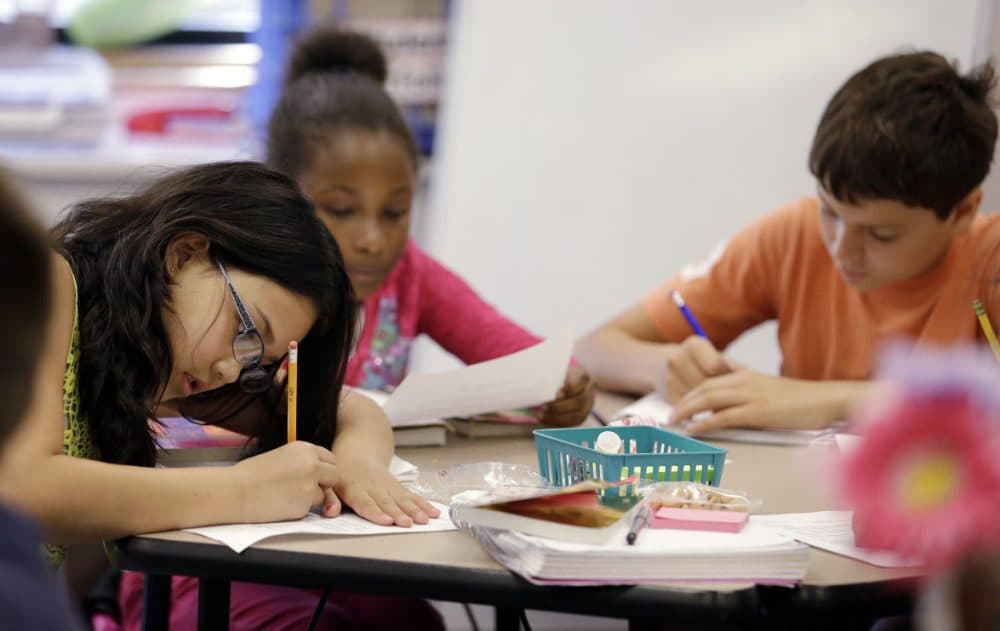Advertisement
Should Public Schools Be Allowed To Charge Fees?
Resume
At school districts around the country, parents are facing sticker shock as the new school year begins. More and more public schools are charging fees for things that used to be free.
The charges range from $2 for a pair of lab glasses and $5 to cover the cost of printer toner, to up to hundreds of dollars to ride the school bus or play after-school sports.
California is different. Two years ago a law went into effect that abolishes all fees for students in public schools there. Should public schools in other parts of the country be following that model - or are fees the only way to make up budget shortfalls?
Here & Now's Meghna Chakrabarti speaks with David Sapp, director of education advocacy for the ACLU of California.
Interview Highlights: David Sapp
How did California end up abolishing fees for public schools?
"Well, the story actually starts back in 1879 when California adopted its constitution and included a provision that said students had a right to a free public education, and so the public school system was explicitly created as free. And over the years, there have been different guidance, opinions and decisions – including by the state Supreme Court – that clarified and reinforced what had been written into the constitution in the 1800s. But what we saw back in the early 2010, 2011 range was that a lot of schools all of a sudden were very openly charging fees again for basic parts of the education system: for course materials, for basic instruction packs. We actually saw an enrollment fee and that's what really prompted us to take action and approach the issue at a state-wide level as opposed to just individual instances."
Have programs been cut as a result of abolishing the fees?
"What we've seen is that overall, the awareness of what the rules are with respect to fees has increased tremendously. What we haven't seen is the wholesale elimination of programs that people believe the schools should be offering. There's nothing in the law that prohibits schools from asking parents or any member of the public to contribute their fair share, for example, or to say 'if we don't have enough people make a contribution for this cost, we may have to discontinue the program.' So, again, this goes back to the ultimate value behind the public education system of an investment for an egalitarian society and whatever our community believes it should provide to the young people in the community. Why is it that we're having to charge fees to provide basic instructional materials for science class to students? What does that say about us and how we're valuing the education we're giving to our kids. So in general, we haven't seen a widespread loss of programming. What we've seen is a more intentional and honest conversation about the resources available to our public schools. Because at the end of the day, we know that the state has not invested to the extent that it needs to to provide that rich, robust set of offerings that can make an education equal and exciting and engaging for all students."
But isn't there still a problem between affluent and non-affluent districts?
“Absolutely. It is a problem and, you know, in California, this goes back decades across school district lines. There are differences in the amount that they're able to spend per student. You know, that goes back to the '70s. There was actually a major lawsuit that focused on gross disparities, and even after the court found the level of disparity was so extreme as to violate the Constitution. Even today we still see that there are those disparities and so that absolutely is a reality."
Guest
- David Sapp, director of education advocacy for the ACLU of California. He tweets @DaveACLU.
This segment aired on September 15, 2015.